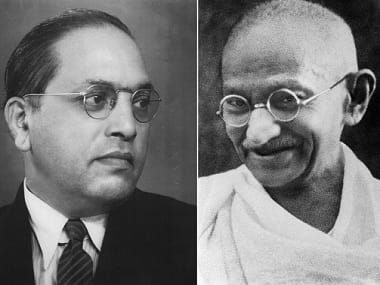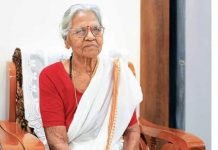When I wrote an essay for a competition on Dr. B.R Ambedkar years ago in school, I portrayed him as a brilliant man who drafted the Constitution of India and as a leader who vehemently opposed the discrimination of the untouchables. Little did I know, these adjectives that I had used for him were just the tip of the iceberg.
I remember the time when I had asked my father who he was, and he replied, “He is our God, he has given us all a life of dignity.”
Now I think, had I added those words in my essay, I would have bagged a top position at the essay writing competition.
Ambedkar today and even during the days of my childhood, was largely reduced to some sort of a Dalit icon or considered the architect of the Constitution. He has been compared to other prominent leaders like M.K. Gandhi and Jawaharlal Nehru and often belittled . Ambedkar was proclaimed the greatest Indian in 2012, the poll was conducted by the Outlook Magazine and Gandhi was not included in the list because the panel of experts said, “if Gandhi were to be included in the list, then there would be no competition for the title of the Greatest Indian.”
The contributions made by B.R. Ambedkar to the Indian society have been suppressed by the state as his works often remain unread in schools and universities of the country.
Recently, a research fellow at the Ghana university, named Obadele Kambon, who is also one of the leaders of the movement in the university raised the slogan “Gandhi Must Fall”. The students contended that Gandhi was a racist and demanded his statue to be removed, he contended even though Gandhi’s biggest legacy was nonviolence he juxtaposed his legacy by coercing Ambedkar to sign the Poona Pact and thereby jeopardising the future of Dalits in the country.

The relation between Ambedkar and Gandhi is always brought to the fore when either of them is being discussed but the spree on claiming Ambedkar’s legacy by many ideologically inclined organisations including the Rashtriya Seva Sangh is jaw-dropping!
While comparing Gandhi and Ambedkar, an important part of Ambedkar has been overlooked in his legacy, that is Ambedkar as a feminist.
Ambedkar linked caste with gender and explained the crucial position that women hold in the society. In his excellent piece namely Castes in India, Their Mechanisms, Genesis and Development, he describes caste as an institution that portends tremendous consequences; he describes caste using the ‘Insider-Outsider’ doctrine.
He explains, as Brahmins referred to themselves as insiders they closed their doors to the outsiders (the so called lower castes) further, the door is only opened to the immediate next or close to the ‘insiders’ as this process is imitated by other castes vertically, the doors for Dalits are closed by all, hence they are ostracised and discriminated against .
He points towards the fact that marriage as an institution and endogamy are used as tools that regulate caste. It is here that women play the key role, as they are controlled by the societal norms and rules. Scholarship on Dalit women and their oppression by upper caste men in the work place and also at their own homes has been doing the rounds for a long time now, but the role of upper caste women on demolition of caste that ventures from the work of Ambedkar has rarely been discussed.
Eminent Indian feminist scholars specialising in the stand point theory, point towards the Dalit women’s stand-point but rarely discuss the importance of the stand of the so called upper-caste women as well, in the demolition on caste.
The Insider-Outsider doctrine that Ambedkar uses in his writings stands true even today, in his important work Caste in India, he says, “ As long as caste in India does exist, Hindus will hardly inter-marry or have any social intercourse with outsiders.”
According to a survey in 2014, only five percent of Indians marry outside their caste. Although sixty percent of educated upper-castes in their matrimonial accounts mention ‘caste no bar’ however only ten percent of them do not mention their own caste, signifying, even the urban-educated lot prefer entering into a marriage with only those with whom their caste is open to marriage.
Emancipation of women, especially the so-called “upper caste” is of great importance and a compulsory step towards the liberation of Dalit women. Hypergamy is at surge but hypo-gamy is rare as women are largely “controlled” by the institution of caste.
If caste and inequality are to be destroyed, Ambedkar’s writings need to be read and explored more. In this sense he was not only a proponent of the Dalits or the Dalit women alone but of the whole of womankind “controlled” by the society.
I see Ambedkar as a feminist, who was far ahead of his times and tried to liberate not just Dalits men and Dalit women but all of womankind from the shackles of the society that only chained them and let the men free. It is for this reason that his writings should be included more often in feminist literature.
Shital Baraily is pursuing her Masters at the Centre for the Study of Social Systems, JNU,New Delhi.














